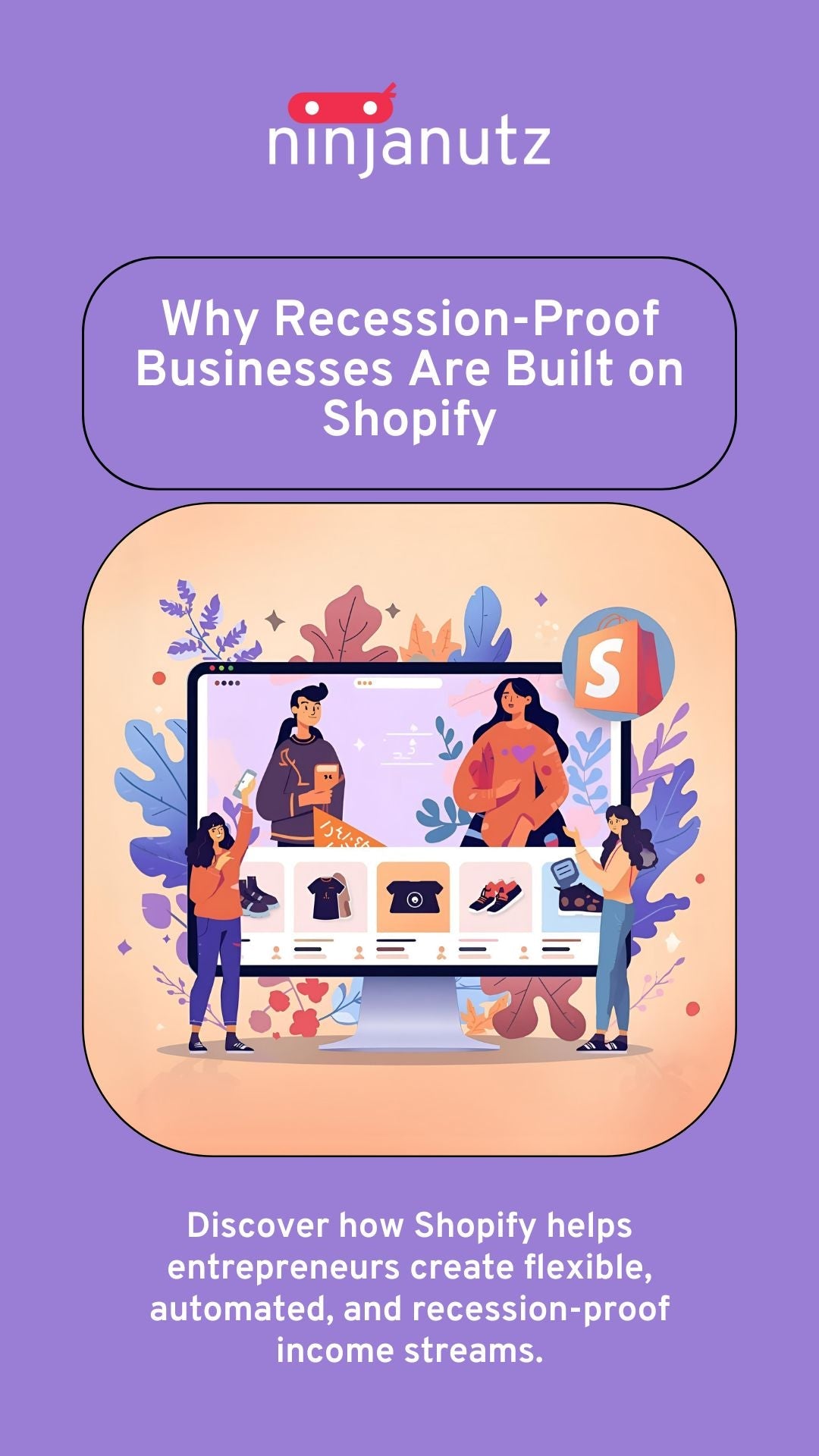Why Recession-Proof Businesses Are Built on Shopify
This post may contain affiliate links and we may earn a small commission when you click on the links at no additional cost to you.
Most entrepreneurs start their business chasing freedom. But somewhere along the way, freedom turns into a treadmill.
They trade time for tasks, money for inventory, and stability for uncertainty, all in the name of growth. And when the economy wobbles, their entire system shakes with it.
Here’s the uncomfortable truth: if your business only works in good times, it’s not really a business. It’s a bet.
Let’s talk about how to build something that actually lasts.
The Problem with Relying Only on Physical Products
Every product-based entrepreneur knows the grind: more stock, more shipping, more advertising.
But when consumer spending slows, ad costs rise, or supply chains break, margins vanish, cash flow dries up, and the business that once felt like freedom starts feeling like survival.
Most owners react by doubling down, producing more, discounting harder, and running ads just to stay visible.
That’s not a strategy. That’s panic with a budget.
The Shift Toward Digital Resilience
Recessions don’t destroy every business. They reveal which ones were built to adapt.
During the 2008 crash, digital products exploded while traditional retail struggled.
During COVID, e-commerce and online education grew faster than ever before.
The pattern repeats every time: digital systems absorb economic shocks better than physical ones.
Why? Because they scale without the same friction.
Shopify sits at the center of that digital transformation.
1. Flexibility Is the New Stability
Physical inventory ties your capital to one idea.
Shopify lets you test ten ideas with a single system.
You can launch:
- A print-on-demand collection that never touches your storage shelves
- Digital downloads that sell on autopilot
- Subscription offers that create recurring revenue without more stock
The point isn’t to abandon physical products; it’s to blend them with digital assets that increase flexibility.
A single product-based Shopify store can evolve into an entire ecosystem of income streams.
And that evolution starts with the right foundation.
👉 Start your Shopify store here.
2. Automation Beats Optimization
Most entrepreneurs obsess over the wrong lever. They try to optimize manual processes rather than automate them.
Shopify flips that equation:
- Orders process automatically
- Inventory updates in real time
- Emails and customer flows run 24/7
- Apps integrate with payment gateways, CRMs, and marketing platforms
Automation doesn’t just save time; it protects your energy.
It keeps your store running when you’re focused on creating, marketing, or simply living your life.
That’s what real resilience looks like: a system that earns while you adapt.
3. Digital Products Multiply Margins
Here’s the quiet advantage digital products have: they don’t panic when the economy slows down.
- No manufacturing costs
- No warehouse rent
- No supply chain chaos
- Instant global reach
That means you can serve 10 or 10,000 customers with the same effort.
And while competitors shrink their operations, you can scale your impact.
Even physical stores can integrate digital elements: guides, templates, memberships, online workshops.
They turn expertise into assets that keep selling no matter what happens around them.
4. Adaptation Is the Ultimate Insurance
Recessions punish rigidity. The stores that thrive are the ones that pivot fast.
With a digital business, you can:
- Switch to pre-orders instead of full inventory commitments
- Bundle slow-moving products with top performers
- Offer limited drops or timed collections
- Add new payment options or rewards programs overnight
The digital-first brands that made these moves in 2020 didn’t just survive; they grew.
Your future revenue doesn’t depend on avoiding bad times. It depends on how quickly you adapt when they come.
Building a Business That Grows Stronger Under Pressure
The best time to build a resilient business isn’t during a crisis. It’s before one.
Because when everyone else is tightening their belts, the entrepreneurs who built flexibility into their systems are expanding.
Economic downturns don’t kill opportunity; they concentrate it. They reward those who built digital leverage when others built inventory debt.
If you’ve been thinking about starting something new, or transforming your existing store into something smarter, this is your signal.
Shopify gives you the platform, tools, and automation to build a business that thrives no matter what the economy looks like.
👉 Build your Shopify store today
The Takeaway
Business isn’t about guessing what happens next. It’s about being ready for whatever does.
The most successful brands aren’t the biggest or the flashiest. They’re the ones that adapt quickly. They stay lean, automate what matters, and keep finding new ways to serve their customers.
That’s what Shopify was built for. Helping entrepreneurs create solid businesses that last.





Leave a comment
All comments are moderated before being published.
This site is protected by hCaptcha and the hCaptcha Privacy Policy and Terms of Service apply.